In this article
Get ready to dive into the incredible world of fish and marvel at every type of fish out there. You’ll discover over 30,000 species, like the jawless hagfish, cartilaginous sharks, and dominant bony fish. These aquatic wonders are grouped by their skeletons and one-of-a-kind adaptations. Fish have honed skills like camouflage and rich social interactions. They’re key players in the underwater food web, but overfishing and habitat loss put them at risk. Shrimp, salmon, and canned tuna remain popular catches. Stick around—there’s a whole ocean of intrigue to explore.
Mapping Fish Family Trees
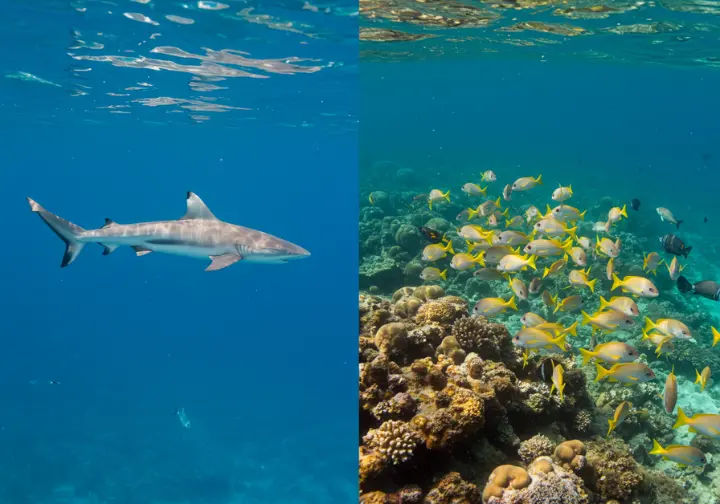
You’re probably wondering how different fish are related, right? Tracing back their ancestry, we can see the earliest jawless fish, then the wonders of cartilage skeletons, and finally, the bony fish which dominate today’s waters. Ready to untangle the history of fish?
Jawless Fish Primitives
Jawless fish, belonging to the Superclass Agnatha, are the most ancient lineage of living fish, and they’re set apart from almost all other vertebrates since they don’t have jaws. You’ll find they sport a suctorial or filter-feeding mouth instead. These truly creatures existed long before other types of fish. Think hagfish, those deep-sea scavengers, and lampreys, some of which behave like a parasitic eel.
They typically have elongated, eel-like bodies without scales or paired fins, which is like no other different fish you’ve seen. Instead of a full skeleton, they’ve got a notochord. You’ll find them bottom-dwelling in the deep-sea, or even as a swamp-eel. There’s only a small amount of jawless fish and single species within these fascinating ranks.
Cartilage Skeleton Wonders
Cartilaginous fish, belonging to the class Chondrichthyes, are the real-deal wonders of the fish world, and they’re set apart by their skeletons, which are mostly cartilage, not bone, making ’em super flexible and lighter in the water; think sharks and rays, those apex predators we dream of hooking. You’ve got two main groups: Elasmobranchii, which includes the shark, skate, ray, and sawfish families, and Holocephali, those mysterious chimaeras.
We all appreciate the developmental trajectories of these cartilaginous fish, which have led to over 1,100 species from shallow waters to the deep-sea fish habitats. You’ll find sharks of all shapes and sizes with those rough placoid scales. Their skin and lack of swim bladders mean they’ve got to have other tricks, such as large, oily livers for buoyancy. NOAA actively manages 474 stocks, including vulnerable shark species impacted by bycatch.
Bony Fish Dominance
If you’re talking numbers and sheer takeover, bony fish definitely run the show. They’re the MVPs of the fish world, with numerous species swimming in nearly every corner of the water. You’ll find different types everywhere, from the sea to freshwater fish habitats, accounting for a staggering 96% of all fish species.
You see, bony fish have evolved to dominate. Their skeletons, made of true bone, offer sturdy support. Plus, their swim bladders let them easily hover, unlike sharks who need to keep swimming. From tuna to goldfish, these recognizable species are mostly ray-finned. Believe it or not, the jaw thing enhances feeding and helps increase fish species. The lobe-finned are the fish who are all types of fish from land animals came from.
Many bony fish species are attracted to artificial lures like fishing flies, which mimic their natural prey.
Exploring Every Type of Fish Numbers
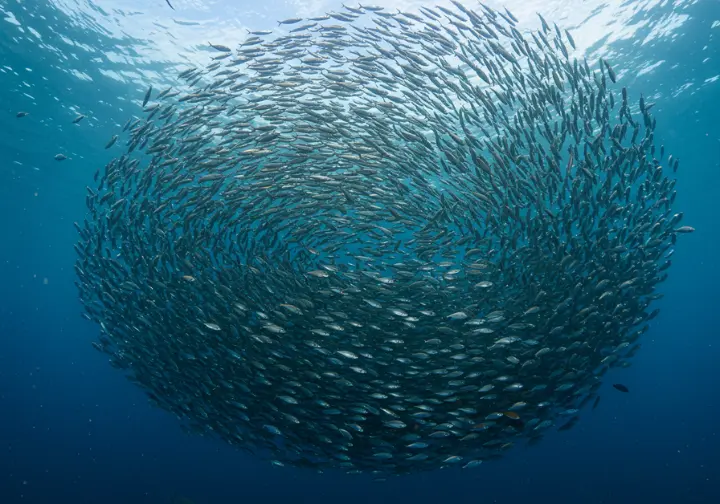
You’ve tossed a line, but how many fish species are actually out there? We’re gonna look at the sheer numbers, comparing saltwater and freshwater hotspots. You’ll additionally get to think about the excitement when new species get found, keeping the sport alive.
Sheer Species Numbers
We’ve all heard fish stories, but when you get down to brass tacks, the sheer number of fish species swimming around in our planet’s waters is mind-blowing, with current estimates claiming over 30,000 different kinds. This is more than all other vertebrate species combined.
You’ve got your every type of fish, from the smallest freshwater favorites to the massive creatures lurking in saltwater fish habitats. Considering all the wild fish, it’s not hard to see how we’ve recognized fish from certain types thriving in various ecosystems of fish worldwide.
And don’t forget the deep-sea creatures. New several species are appearing. Isn’t it astonishing how fish have adapted to survive? Grasping these numbers helps us appreciate their importance, showing how each species matters—it impacts ecological function.
Freshwater vs Marine Homes
Fish are all over, but did you know their homes are split pretty evenly between freshwater and marine environments? You’ll find about 15,200 species of freshwater fish calling rivers and lakes home, like catfish and trout. On the flip side, marine environments boast approximately 14,800 species, including shark and tropical fish near coral reefs.
It’s astounding how these creatures adapt to both freshwater and saltwater. In regards to biodiversity hotspots, think of tropical rainforest rivers; they’re cradles of freshwater life. Neotropical rivers have approximately 5,600 of freshwater fish species! Fishing in freshwater or marine environments gives you an enormous appreciation for fish diversity, nonetheless, recall freshwater areas support almost half of all species.
Catfish scavenge along riverbeds, making them a prime target for anglers in freshwater systems.
Discovering New Species
Think about it; the trout you’re chasing now might have cousins u.s. fish and wildlife service hasn’t even cataloged! In freshwater ecosystems, like remote rivers, the seemingly plain catfish could turn out to be a longnose catfish, suckermouth catfish, or even an eeltail catfish yet unknown. There may be other freshwater fish out there the you´ve never seen.
A freshwater shark maybe? Who knows? You never know what you will find next. This’s why you just got to get out there! Walleye thrive naturally in these same ecosystems, making them a prime target for anglers exploring new waters.
Unveiling Fish Wonders
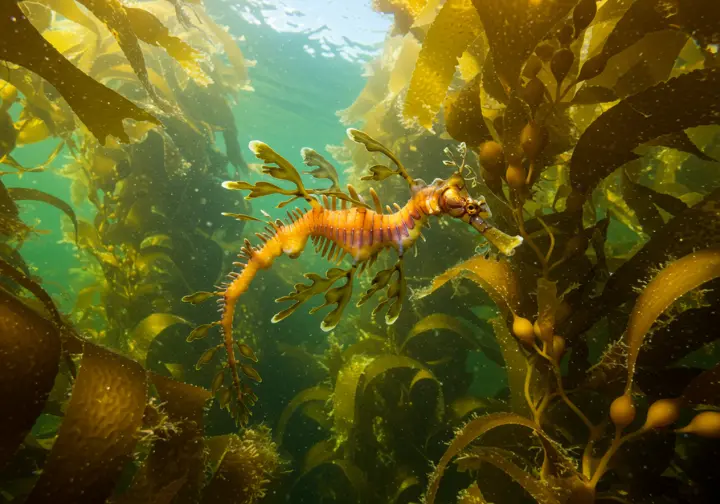
You’re gonna love what we’re about to cover! Aren’t you curious about how massive some fish get, or how ludicrously fast they can swim? We should investigate their crazy lifespans and the extreme ways they survive.
Size, Speed, Lifespans
If you’ve ever wondered about the extremes in the fish world, prepare to be amazed by their varying sizes, speeds, and lifespans, which reveal wonders beneath the water’s surface. You’ll find gentle giants like the whale shark, reaching up to 40 feet, contrasting with the tiny scorpion fish.
You’re probably not surprised by the speed demons, with sailfish, marlin, and swordfish hitting 70 mph! Even tuna boasts speeds of around 47 mph. These speeds are critical for survival. Blue marlin thrive in warm waters like the Gulf Stream, showcasing their power during long migrations.
But size and speed aren’t everything. You’ll find that lifespans vary greatly too. Your typical goldfish can live for decades. Wels catfish aren’t too bad either, with lifespans of 60 years. Nevertheless, unlike the antarctic cod or long-whiskered catfish, most don’t live that long.
Extreme Habitat Survival
You’ll find those fish aren’t just surviving; they’re thriving in some of the most out-there spots on Earth. From hot desert springs, you’ve got pupfish kicking it in scorching temperatures. Venture deeper, and discover deep sea fish under crushing pressure. Some species, like certain lizardfish, even dwell miles below!
Imagine the challenges! Other fish, like airbreathing catfish, have unique solutions for low-oxygen environments. Some electric catfish have potent abilities. Then we have cavefish, flatfish, and other species that are adapted to living in the dark.
Now, consider the extreme cold. You’ll find icefish, cruising around in icy Antarctic waters. How? Through antifreeze glycoproteins in their blood. These icy adventurers have blood as thin as water. They’re everywhere there’s liquid water, except Antarctica. Who’s ever hooked an icefish?
For those targeting deep-water species, heavy sinkers and specialized rigs are essential to reach depths where these extreme fish thrive.
Fish Survival Adaptations
We’ve all heard fish tales, but beneath the surface, you’ll find the real stories aren’t tall tales, but incredible adaptations which decide a fish’s fate. Camouflage is everywhere. You’ll see flatfish blend into the seabed. Observe the leafy seadragon’s leaf-like body. You might notice unsettling markings. Some fish even sport eyespots!
But this is not all. Some freshwater fish have special breathing tricks. The lungfish can gulp air! Other fish wield venom, like the stingray and toadfish. Species like the lionfish use venomous spines for defense.
Don’t forget the tough guys like the armorhead catfish, suckermouth armored catfish, and eeltail catfish, which possess unique defenses. Plus, you’ve got the cryptic African glass catfish and the predatory tigerfish. As you can see, survival in the fish world is a constant arms race.
Complex Fish Behaviors
Though old fish tales might paint ’em as simpletons, you’ll be surprised to learn fish have a social life more complex than your average fishing knot, working together and chatting in ways you wouldn’t believe. Cooperation often fish involves teamwork. For example, you’ll see groupers hunt with eels, talk saltwater fish.
Communication isn’t just visual as fish thrive. Many fish communicate through sounds or even unique electrical patterns, envision the elephantnose fish using electricity to “see”! Parental care is common; a fish likes to protect its young. Some are mouthbrooders, safeguarding eggs in their mouths.
Forget the three-second memory myth; fish aren’t goldfish. They learn; it is their favorite type. Some species recall locations and recognize others. Even longnose whiptail catfish or small rainbowfish and vivid cardinalfish. You can bet they are smarter than you think. Carp behavior is influenced by water temperature and underwater structures, making them highly adaptable.
Fish in Human Life

You’re probably wondering which fish end up on our plates most often. We’ll additionally consider the species anglers target for a good time. Plus, we’re gonna show you some key tricks for identifying what might be tugging at your line. For catfish anglers, understanding species-specific bait preferences can make the difference between a slow day and a trophy catch.
Popular Fish We Eat
The shimmering scales of seafood grace dinner plates worldwide, and some fish have swum their way into our hearts (and stomachs) more than others. You’ll find shrimp leading the pack in the US, its availability makes it the right fish. Next, you’ll see flavorful salmon, if wild-caught or a product of aquaculture. Canned tuna‘s always there, likewise, easy and cheap.
Globally, skipjack tuna’s huge since it’s fish tasty in canned goods. Farmed salmon? Yep, aquaculture gives us about 70% of it. You’ll as well see a lot of white fish, including scrod cod, sea bass, and cod. You might furthermore see some fried catfish depending on where you live, one as a tasty freshwater fish. Mahi-mahi is another favorite, or even sablefish.
Consumption patterns? They change from place to place. Bluefin tuna migrate to New England in summer, making them a prized catch during peak season.
Top Recreational Catches
Vast and colorful, recreational fishing is a favorite pastime and packs a serious economic punch. You’ll find anglers targeting a range of species. The largemouth bass debatably reigns supreme in North American freshwaters. You might additionally chase after walleye, known for its tasty flesh and challenging dusk bite.
If you’re into fly fishing, various trout species beckon. Think rainbow trout, speckled trout, cutthroat trout, and even bull trout. As some target tasty panfish, such as family kuhliidae, others chase bigger freshwater game. Then there’s the thrill of recreational saltwater fishing, where local fishing charters can guide you to species like bonefish. Eventually, the perfect catch depends on what excites you. No matter what, tight lines!
Identifying Different Fish
Fin shapes are additionally key. Is it forked like the vulpinus tail, or rounded? Color patterns? Keep an eye out; the elusive golden trout flashes differently than a redfish. Body shape matters: is it longnose gar or something else? I find online tools are the best when you’re using different bait for order perciformes.
Even trout cod is hard to tell from its cousins. The family pentacerotidae is one of the rarest. Use field guides, but recall, variations exist based on the location fished.
Conserving Aquatic Life
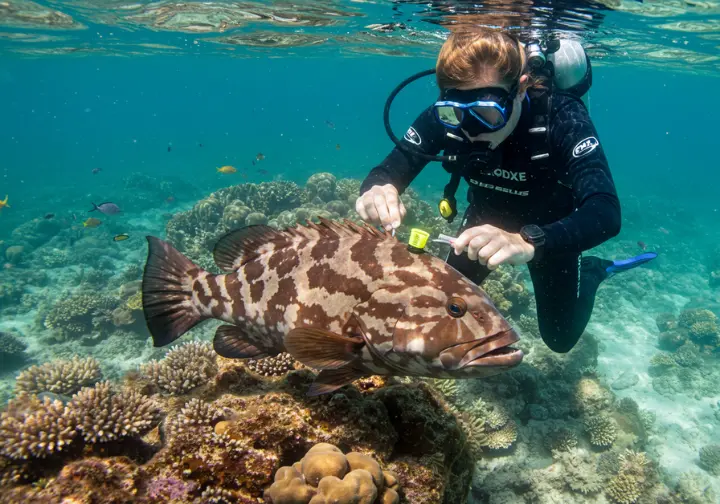
You’ve got to know how fish face some seriously tough odds these days. We’re going to explore the major threats they’re up against, tell you about global conservation, and check out some fish which desperately need our help.
Major Threats Facing Fish
As anglers, we’ve all seen firsthand the beauty and bounty of our waters, but it’s paramount we furthermore understand the serious challenges fish face today. Overfishing’s decimating the population of the massive whale shark and even the gray reef shark. Unsustainable harvests severely impact our u.s. fish and the whole fishing scene.
Looking at your past fishing trip, you’d never guess the redmouth, sea trout, shrimpfish, sea catfish, or river shark face immense habitat loss. Pollution and coastal issues are hurting them. Dam construction limits their habitats. A major concern is destructive fishing practices. Bottom trawling wrecks ecosystems. You’ve got to understand, bycatch accidentally kills millions yearly. The fish don’t stand a chance out there.
Global Conservation Efforts
Given the immense challenges, numerous organizations and initiatives are working worldwide to tackle threats facing fish populations and boost responsible practices. They’re pushing for better fishing rules, like those WWF supports. You can help by demanding sustainable seafood!
Tackling illegal fishing is crucial. Envision those sought-after freshwater fish disappearing thanks to shady dealings! Tough fish deserve a fair chance. We need traceability to stop illegal catches reaching our plates.
Conceptualize those government subsidies – they can make fishing trips all too appealing, driving fleets to catch even the perfect fish. Marine Protected Areas help fish—from freshwater thrive, acting like safe havens. We are watching out for your favorite fish like the gray shark, white shark, black fin shark, flabby whale, and temperate bass. It’s about giving ’em a future!
Endangered Fish Statistics
The efforts to protect our finned friends set the stage for a hard truth: fish face big problems worldwide, and you see that in dwindling numbers. You can’t ignore the stats. A little over 1,400 kinds are at risk of dying out! Freshwater fish are feeling it big time, with a fourth of them threatened. You might not think about it, but migratory fish are down a crazy 81% since 1970.
We gotta watch out for the squawfish, the yellowfin cutthroat trout, and even the galjoen fish. Some deep-sea weirdos like the redmouth whalefish and the megamouth aren’t doing so hot either; neither are unique types like the bala shark, the saw shark, the false cat shark, the eeltail, or the bizarre alligatorfish. Sustainable fishing? We’re headed away from it. Fish populations are dwindling.
Fish Ecosystem Roles

You’re probably thinkin’ fishin’s just catchin’ dinner, but there’s way more to it. We’ll explore how these finned fellas run the underwater food web and cycle nutrients like pros. Let’s even bust some myths about our scaled buddies!
Fish Food Web Importance
If fish vanish, things get dicey fast. Without cowfish, crawfish, mustard eel, or even the humble betta fish, predators face starvation. Everything’s connected. Some species are incredibly important for a community. The health of coral reefs is dependent on certain species of fish. Changes in one level of the aquatic food chain affect everything else.
Nutrient Cycling Champions
Though you might not expect it, fish are nutrient cycling champions in aquatic ecosystems, playing a significant role as mobile reservoirs and distributors. They release fundamental nutrients like nitrogen and phosphorus, essential for the growth of aquatic plants—the base of the food web. Fish poop matters! As it decomposes, nutrients fuel productivity.
You see, their movements transfer nutrients between habitats. Some migrate from deep, rich waters to shallower areas, enriching them. The sheer biomass of fish makes their impact substantial. Ever notice a sea toad stirring up the bottom? Or a blind shark near the seabed? They’re recycling nutrients. Even a clingfish or frogmouth contributes!
Healthy fish equals healthy nutrient cycles. Fishing or changing conditions can really mess with the energy.
Busting Common Fish Myths
Let’s tackle some fin-tastic myths about our underwater buddies, as there are plenty of tall tales floating around the fishing world, from what’s safe to eat to how it’s caught. You might’ve heard eating seafood’s always unsustainable as a result of overfishing. This is not true! Responsible fisheries offer sustainable stuff.
Another whopper: seafood’s expensive. Nope! Plenty of affordable, healthy options—think farmed fish and seasonal species. You probably heard you can only eat shellfish in months with an “R”. This is old news, thanks to modern safety checks.
Italian myth: no seafood and dairy. Untrue! Many dishes mix ’em just fine based on flavor. Fresh fish is better than frozen? Not always! Flash-freezing locks in freshness. All fish are toxic? Nah, follow the health guidelines and enjoy those omega-3s wisely.
Fish Diversity: Final Thoughts
As we wrap up our exploration of fish diversity, recall we’ve only plunged into the depths. You’ve seen just how vastly different fish are, from the ocean’s depths to your local stream. They’re the biggest vertebrate group, vital for healthy waters, playing crucial roles in all aquatic ecosystems.
But hold on, this astonishing diversity is in trouble. With overfishing and destroying their habitats, we’re directly affecting their existence. So, what can you do?
You can start making smart seafood picks. Seek out that blue eco-label, and avoid those highly-rated overfished species. Support fisheries, habitat, and anti-illegal fishing groups with donations or help out with those river clean-ups! We must support the ecosystem and the industry! Talk about fishing and environmental policies that back fish!
Popular Questions
What Are the Best Fish for a Beginner Aquarium? +
How Do I Cook Different Types of Fish? +
What Is the Most Expensive Fish to Buy? +
Can Fish Feel Pain Like Humans Do? +
Are There Any Fish That Can Survive on Land? +
We are a participant in the Amazon Services LLC Associates Program, an affiliate advertising program designed to provide a means for sites to earn advertising fees by advertising and linking to Amazon.com. As an Amazon Associate I earn from qualifying purchases. We also participate in other affiliate programs. The information provided on this website is provided for entertainment purposes only. We make no representations or warranties of any kind, expressed or implied, about the completeness, accuracy, adequacy, legality, usefulness, reliability, suitability, or availability of the information, or about anything else. Any reliance you place on the information is therefore strictly at your own risk. Additional terms are found in the terms of service.


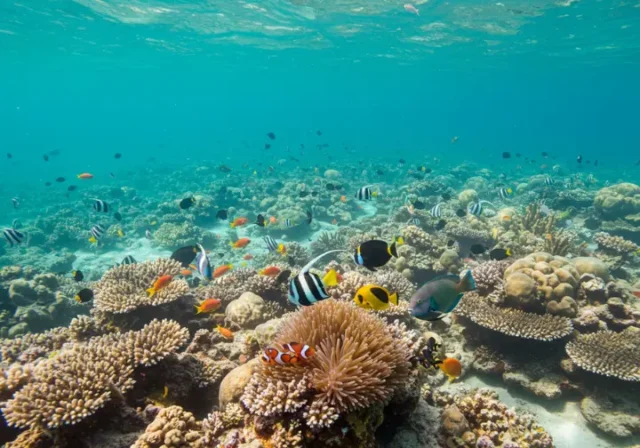

![Ultimate Cabo Fishing Guide: Charters & Tips [2025] Iconic Cabo San Lucas arch at sunrise with a sportfishing boat nearby, representing the ultimate fishing guide destination.](https://masterfishingmag.com/wp-content/uploads/2025/05/01-ultimate-cabo-fishing-guide-2025-238x178.webp)




